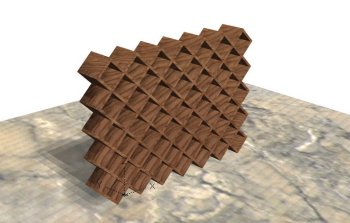
New
Want
to be an Architect, Designer or Engineer
Given the
ability to design any product or system is a great honor and
if we are presented with an early accolade by being awarded
the assignment, we will quickly be humbled by the immensity
of the task and the quantity of the work. Every design present
in nature or created by humans represents the past and points
towards the future and all great architects of products study
previous developments in order to construct their novel version
using the known technology and materials of the era. During
the process towards developing the idea, the creative spirit
and the physical stamina of the individual or group diminishes
along with the time allotted and then the current moment becomes
occupied physically with our best attempt to solve the design
problem. As soon as the invention is installed, the affects
from the environment corrode the material, customers offer their
positive or negative opinion and other product engineers start
to develop alternatives in newer designs. The end of the imaginative
progression now becomes the beginning of a new design cycle
and if the process whether formal or informal is successful,
the singular idealist, the multifaceted group and finally the
culture itself matures.
Designers
do not develop in a vacuum, but rather push whatever system
of mankind presently in affect towards their limitations by
utilizing technology, cultural norms and teamwork. In this textbook,
we will examine two premises; the first is that design performed
by humans is the pinnacle property of man's existence and we
will discuss the methods that we have found over the years that
will cultivate this creative expression in any person or group.
The second principle, however tedious, we will discuss is the
actual techniques to promote discovery which propels us towards
development and solutions. In mankind's continual search, we
do recognize luck or in other words the probability to stumble
onto a promising find while looking for something totally different.
However, the majority of accomplishments on our planet are a
result of visionary processes and purpose such as the pyramids,
the aqueducts, fortresses, iron and steel works, airframes for
flying, electric motors and lights, computers and the Internet,
medicine and medical science, and more. As in any design book,
we will convey similar processes, but in our adaptation of the
science, we will refrain from restricting anyone from the continual
invention and restructuring of their method.


